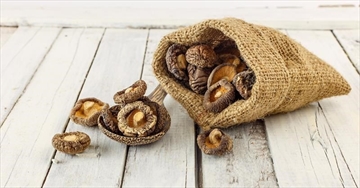
Turmeric, sprouts among healthy foods for 2017
TORONTO — Holiday splurges on cocktails and cookies may lead to thoughts of trying a dietary cleanse in the new year, but there’s no need for a full-scale detoxification, say experts.
“People are always looking for that magic bullet to start off the year,” says registered dietitian Zannat Reza.
“Frankly, if you’re looking to detox or cleanse, we all come with that built in. That’s what our kidneys and liver do. That’s their job.”
An extreme liquid diet cuts much-needed protein and fibre from the diet and can lead to irritability. And if the cleanse is being done to lose weight, the pounds often creep back on once restricted foods are reintroduced.
Instead, resolve to eat a balanced diet of healthful foods. Cover half your plate with fruits and vegetables and then add protein and whole grains, suggests Reza, whose Thrive360 company promotes health.
The new year can be a time to acquire a taste for healthy items trend watchers see on the horizon, such as turmeric, sprouts, seaweed, mushrooms and sardines. Experiment to see what works for you, suggests Michelle Book, holistic nutritionist with the Canadian Health Food Association.
“I think a good, easy place to start is experimenting with a cashew or a hemp milk, trying it in some overnight oats or in your smoothie,” Book says.
Here are some healthy foods and trends expected to be popular this year:
— TURMERIC
Long used in southern Asia for cooking and its therapeutic effects, the spice has been popping up lately in juices, sodas and hot drinks. It lends a brilliant yellow hue to curries and mustard and is touted for its anti-inflammatory qualities.
There’s no consensus on how much should be taken but the University of Maryland suggests one to three grams of the powdered form a day — or 2 ml to 7 ml (1/2 tsp to 1 1/2 tsp).
Start by using it sparingly in soups, salad dressings, dips, smoothies, rice, stir-fries and egg dishes. Too much can lend a pungency that might be unpleasant. Try a pinch or two with other herbs and spices, oil and salt and pepper when roasting vegetables. Some people like to add it to warm almond or cashew milk with ginger, honey and cinnamon to create a warm spiced drink.
The downside to turmeric is it can stain — don’t wear light-coloured clothing when cooking with it, cautions Reza.
— SPROUTS
Sprouting is not only an affordable and nutritious way to add veggies to your diet, but it also appeals to do-it-yourselfers who want a touch of summer during dark winter months.
By allowing a seed to germinate, vitamins and minerals usually locked away in the dried seed are activated, which then allows the body to access and absorb these nutrients.
Mung beans are one of the more popular types. Just 250 ml (1 cup) of the tiny green bean sprouts can provide a substantial portion of the iron intake needed by adults for healthy red blood cells and blood pressure.
When sprouting at home, be sure to buy pathogen-free seeds and use sterile containers. Rinse and drain seeds often and thoroughly to avoid harmful bacteria growing in the wet environment, says Book. Once sprouted, refrigerate and use sprouts within two to three days.
You can also buy sprouted foods like breads and bars.
— MUSHROOMS
Mushrooms are coming out of the dark as consumers are introduced to more varieties. They’re an easy way to boost meatless meals.
Button and cremini mushrooms contain B complex and D vitamins and are high in copper, selenium and fibre.
Dried chaga mushrooms can be made into tea. Add mushrooms to a pot of boiling water, reduce heat and simmer for 10 to 15 minutes, then strain. It will have an earthy taste, but you can add honey, says Book.
— SEA GREENS
Sea vegetables are high in flavour, low in fat and packed with minerals, vitamins, chlorophyll and enzymes.
Nori (commonly used in sushi), wakame (used in seaweed salad) and kombu (used often in miso soup) are also noted for iodine content, which helps keep the thyroid healthy. The recommended intake is 150 micrograms/day with the upper limit being 1,100 mcg/day. Nori contains on average 37 mcg of iodine/gram, wakame has an average of 140 mcg/gram and kombu has approximately 2,524 mcg/gram.
Reza recommends limiting brown seaweed to no more than once a week because of its high iodine content.
— SARDINES
These small oily fish are not only high in omega-3 fats, but they’re also rich in protein and iron and have vitamin B12, which helps with red blood cell production. Some even eat the bones for a great source of calcium.
They’re one of the few foods that contain vitamin D. In Canada, “we’re not getting enough vitamin D naturally through sunlight so eating it in foods is a good way to go and sardines are a great source,” says Reza.
— PLANT-BASED FOODS
The gluten-free trend, rise in diabetes and increasing link between refined sugar and chronic disease have more Canadians seeking “smarter” carb options. Manufacturers are creating pastas with buckwheat, legumes and lentils, says Book.
People are also spiralizing vegetables like zucchini and squash to make noodles.
Plant-based alternatives are filling the breach for people who have difficulty digesting the lactose in cow’s milk, says Book. Along with soy milk, varieties made from flax and hemp seed and nuts like almonds and cashews are commonly on store shelves.
Non-dairy cheeses and coconut yogurt are other options, Book says.
* This article was originally written and published on http://www.bramptonguardian.com/community-story/7049930-turmeric-sprouts-among-healthy-foods-for-2017/

